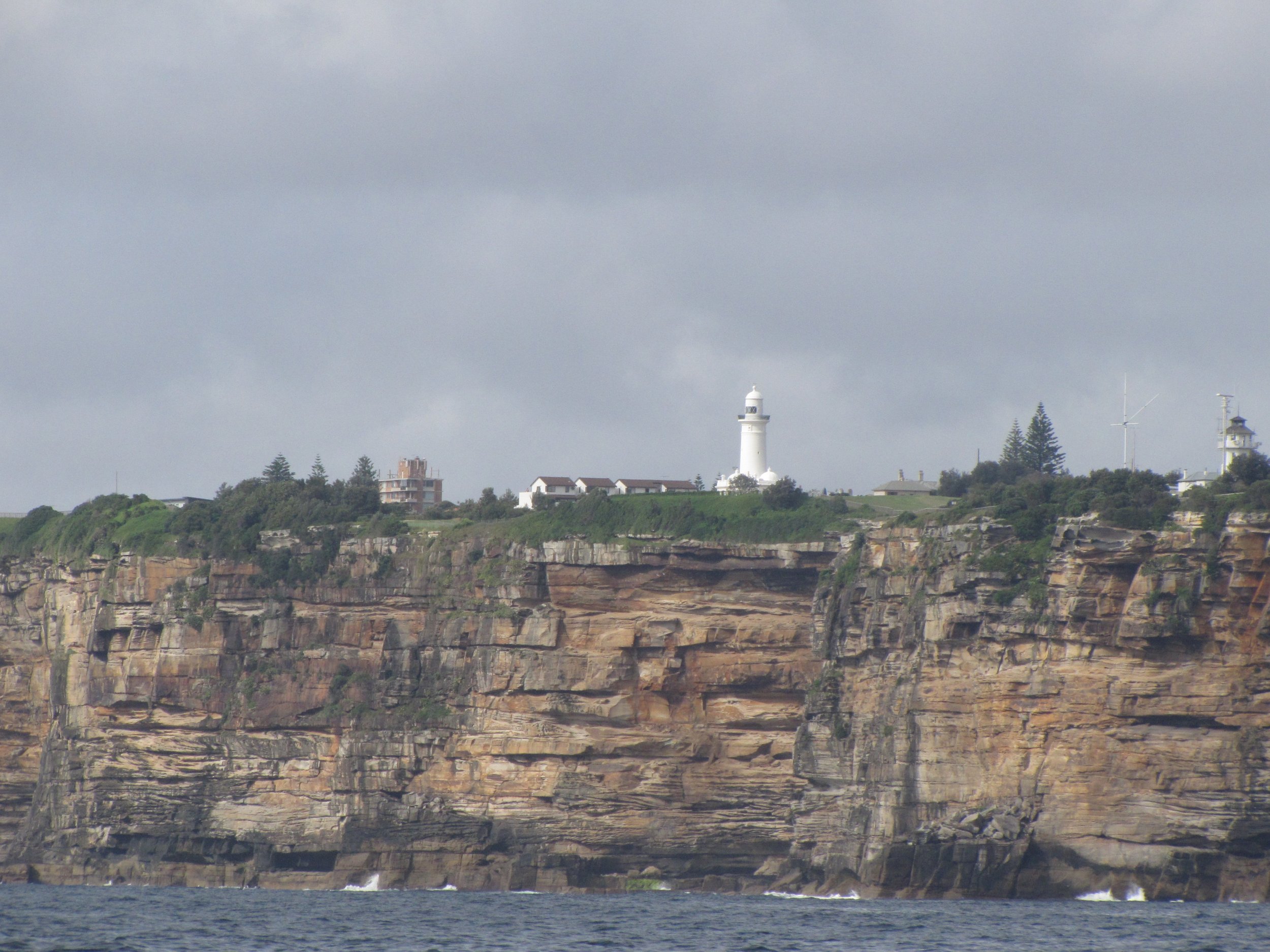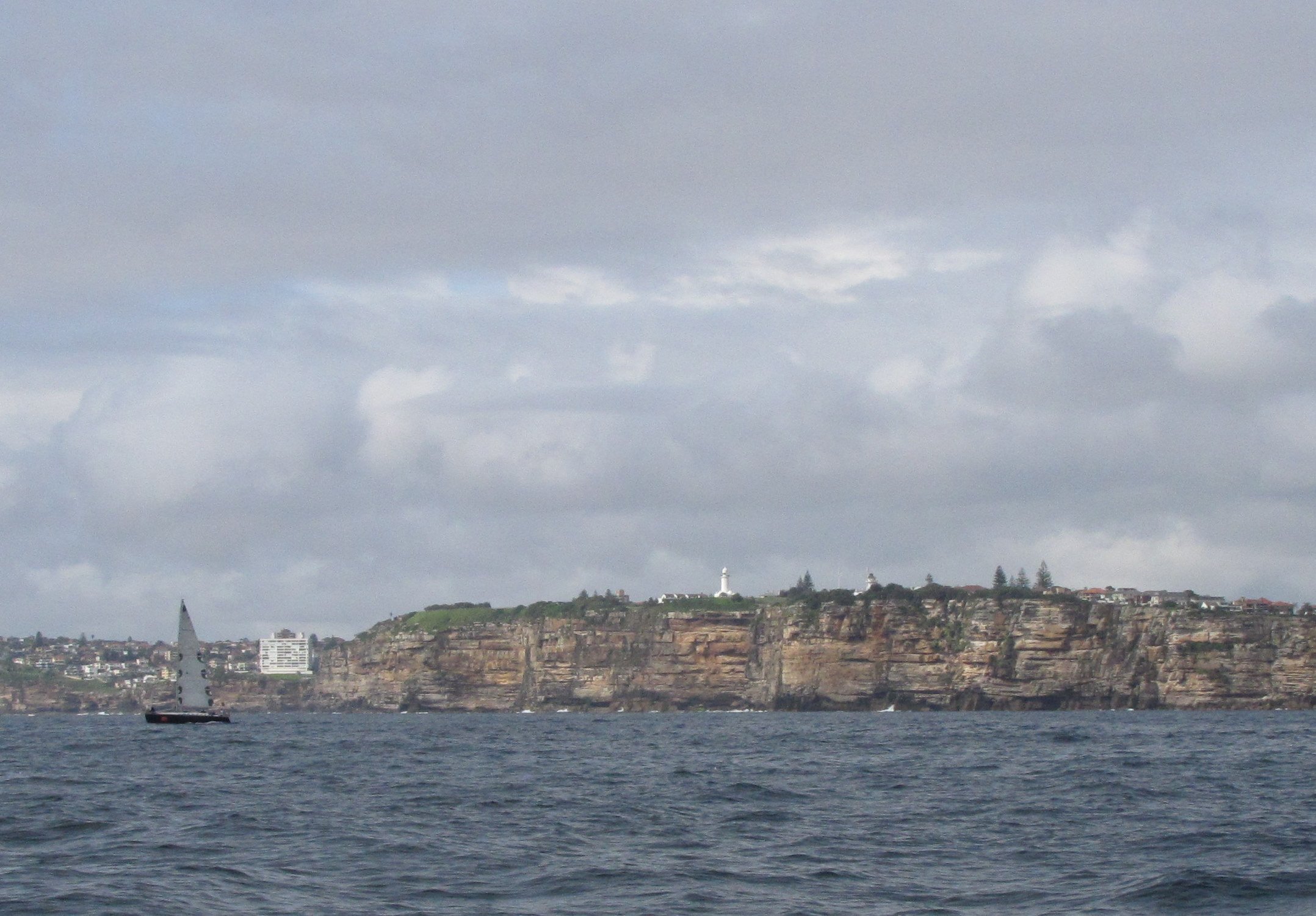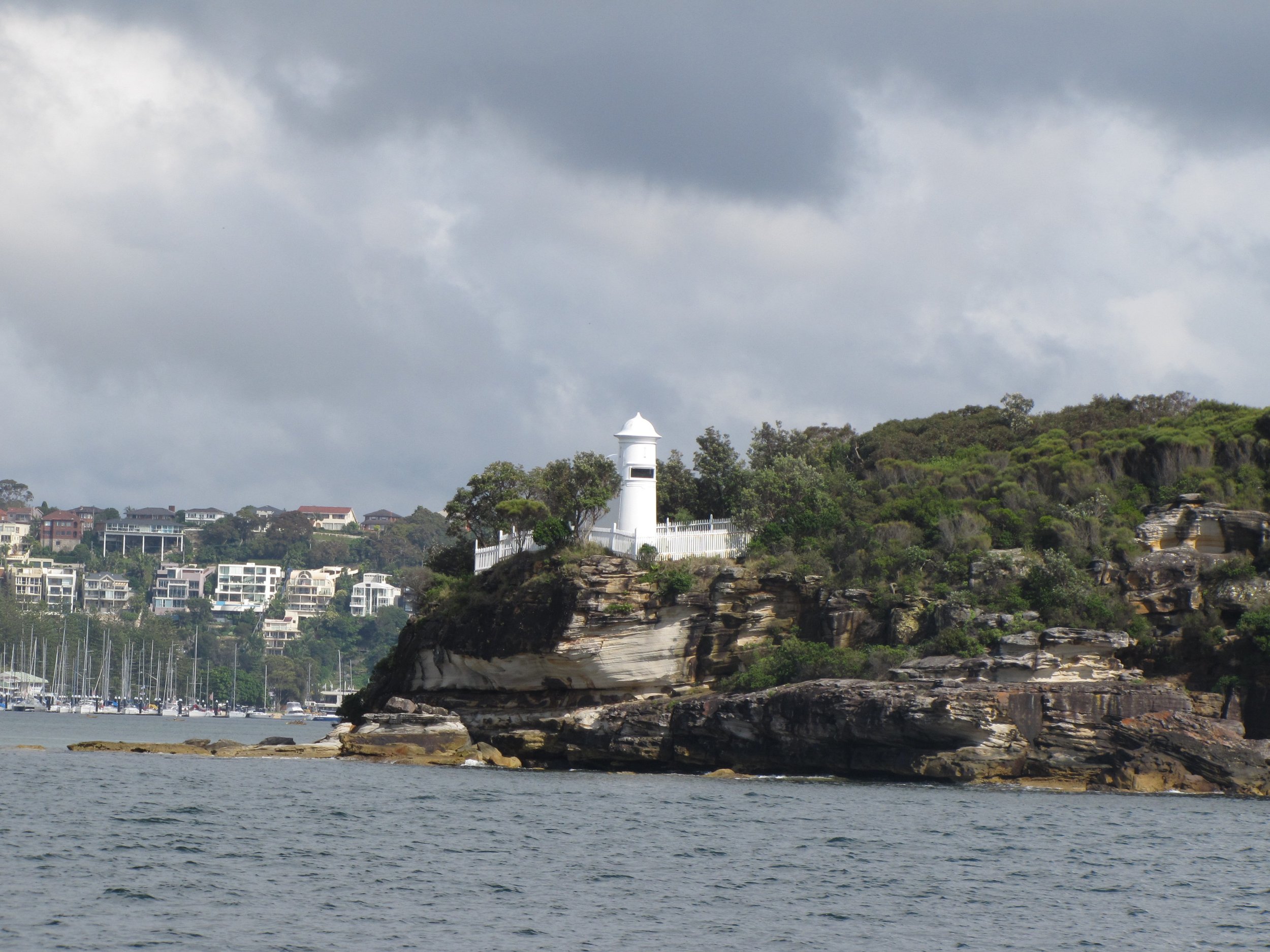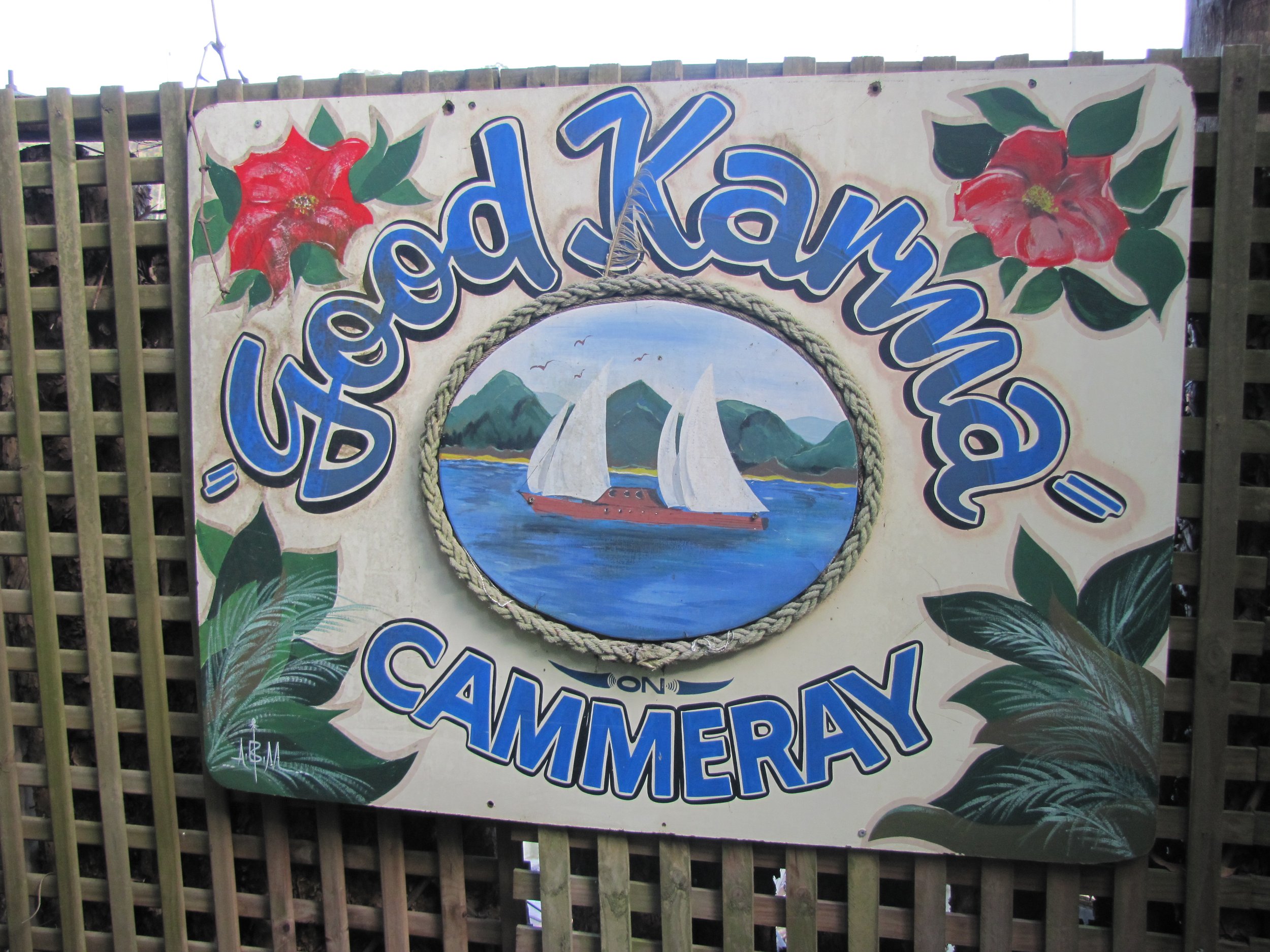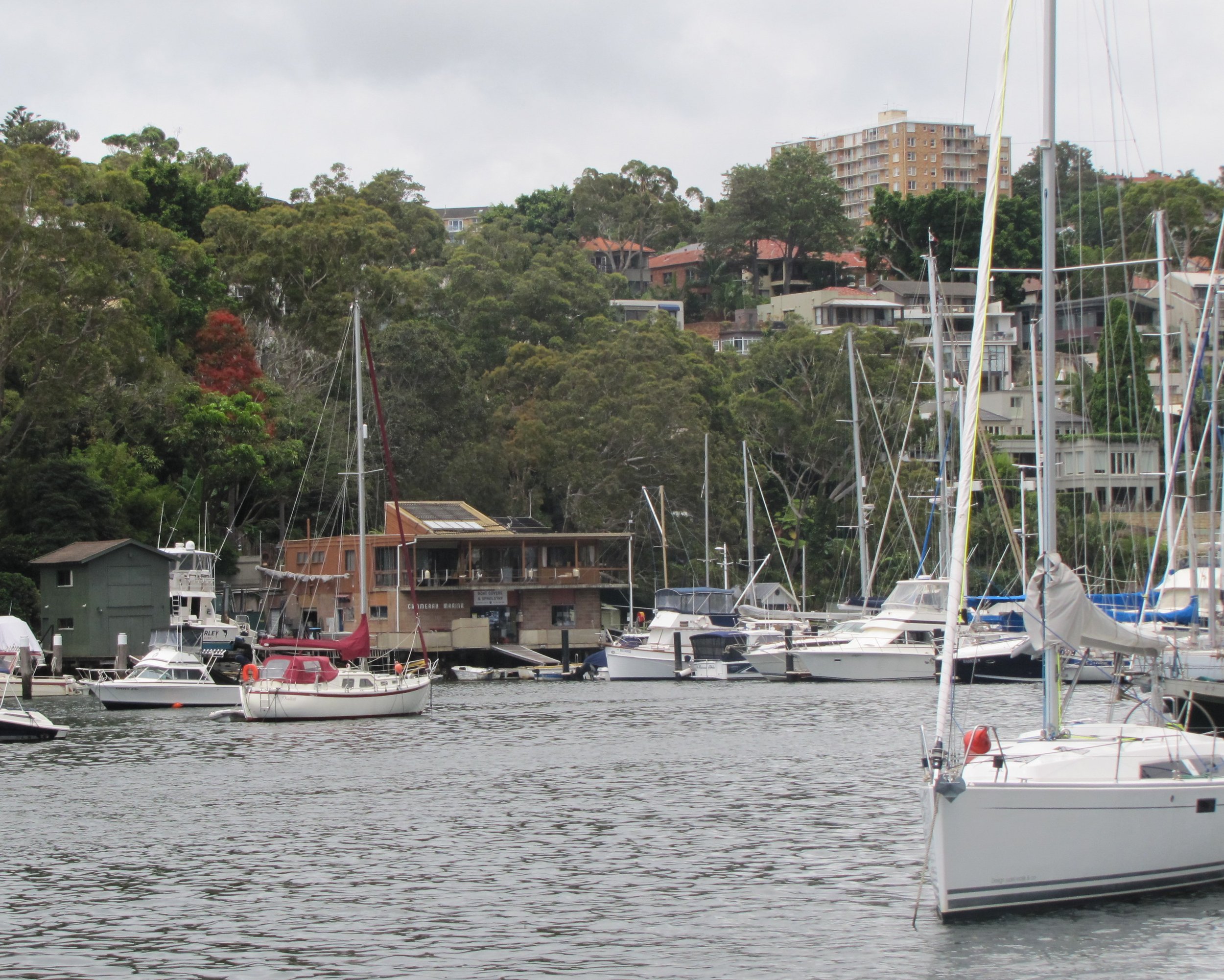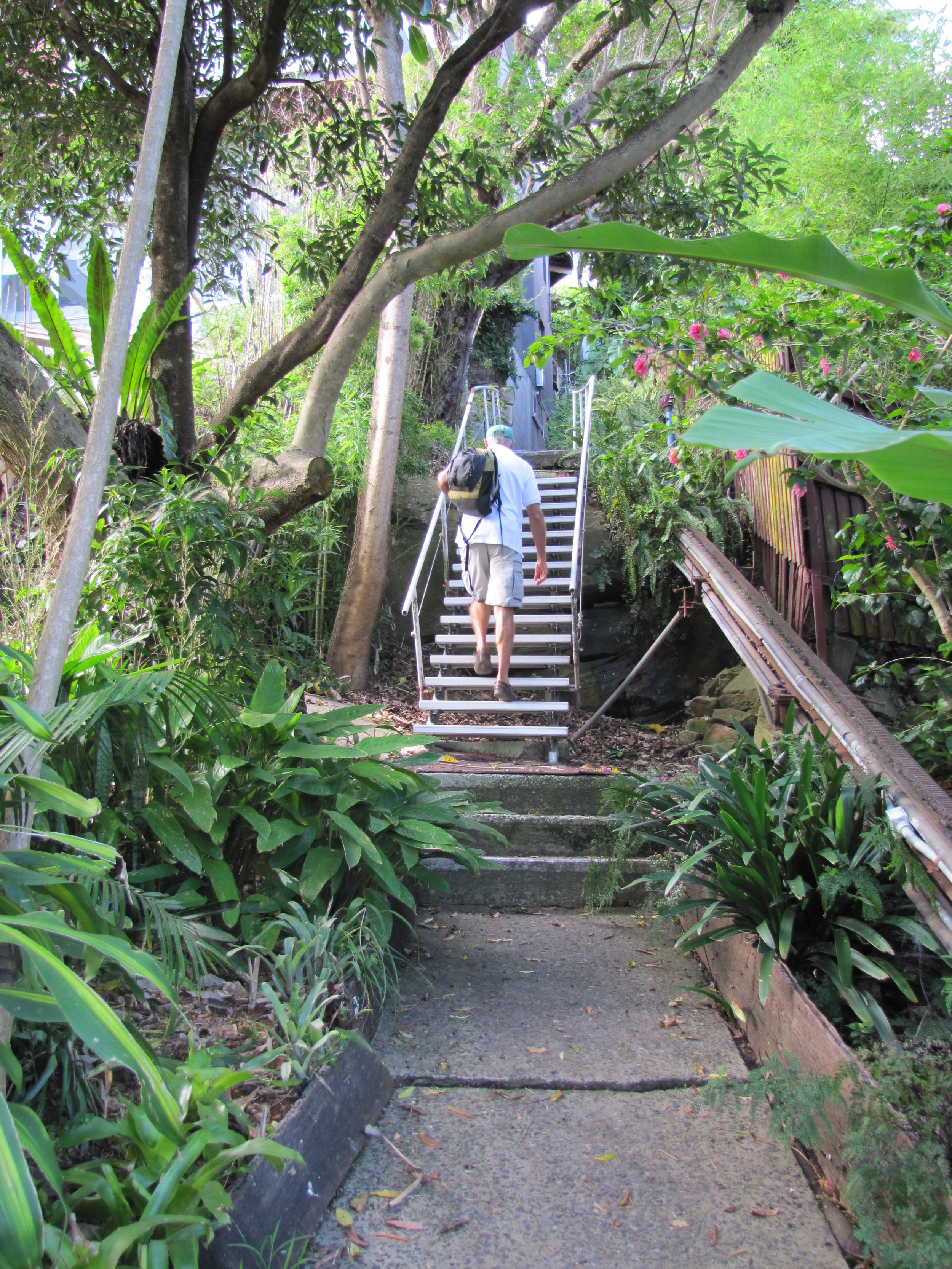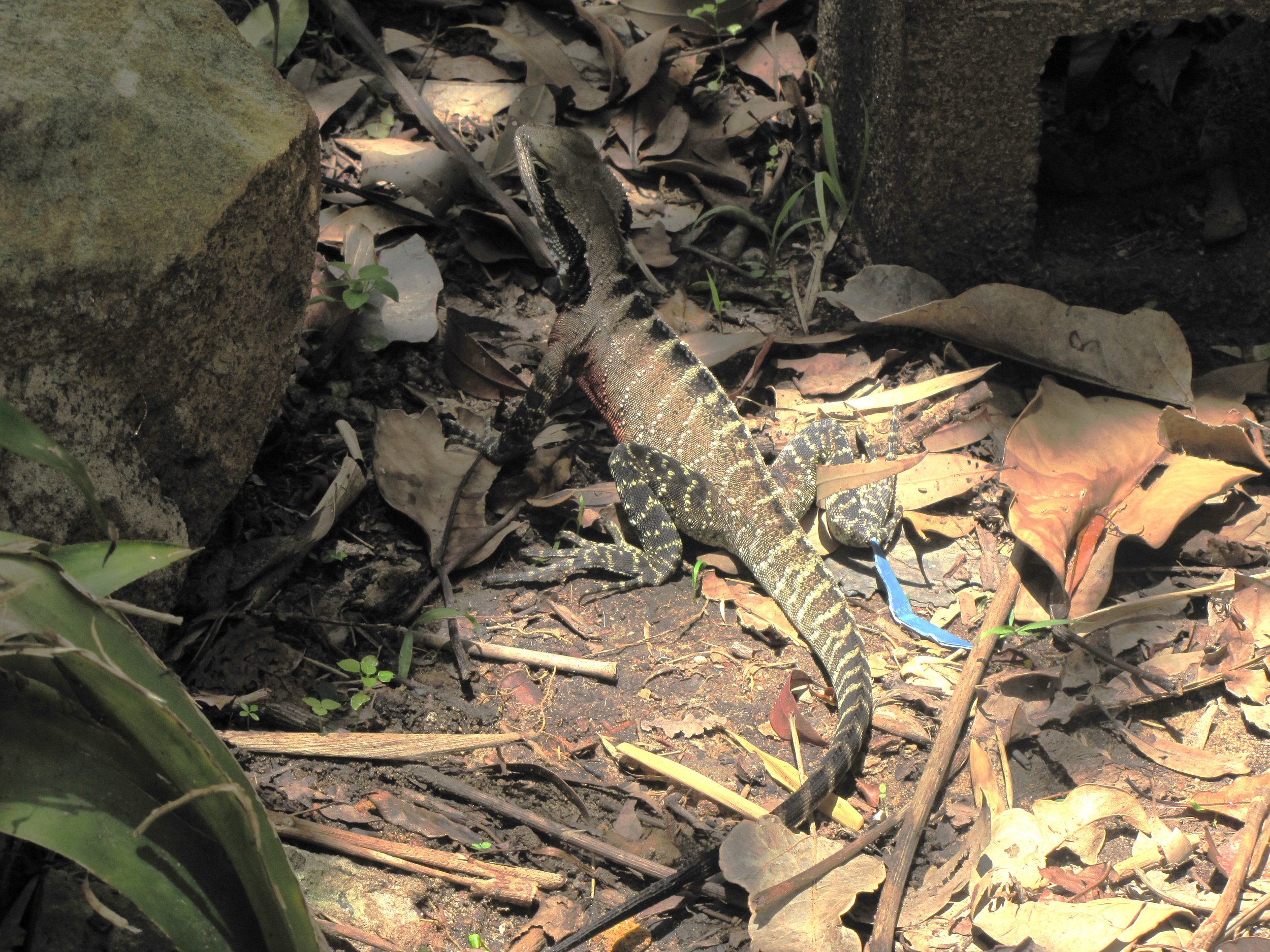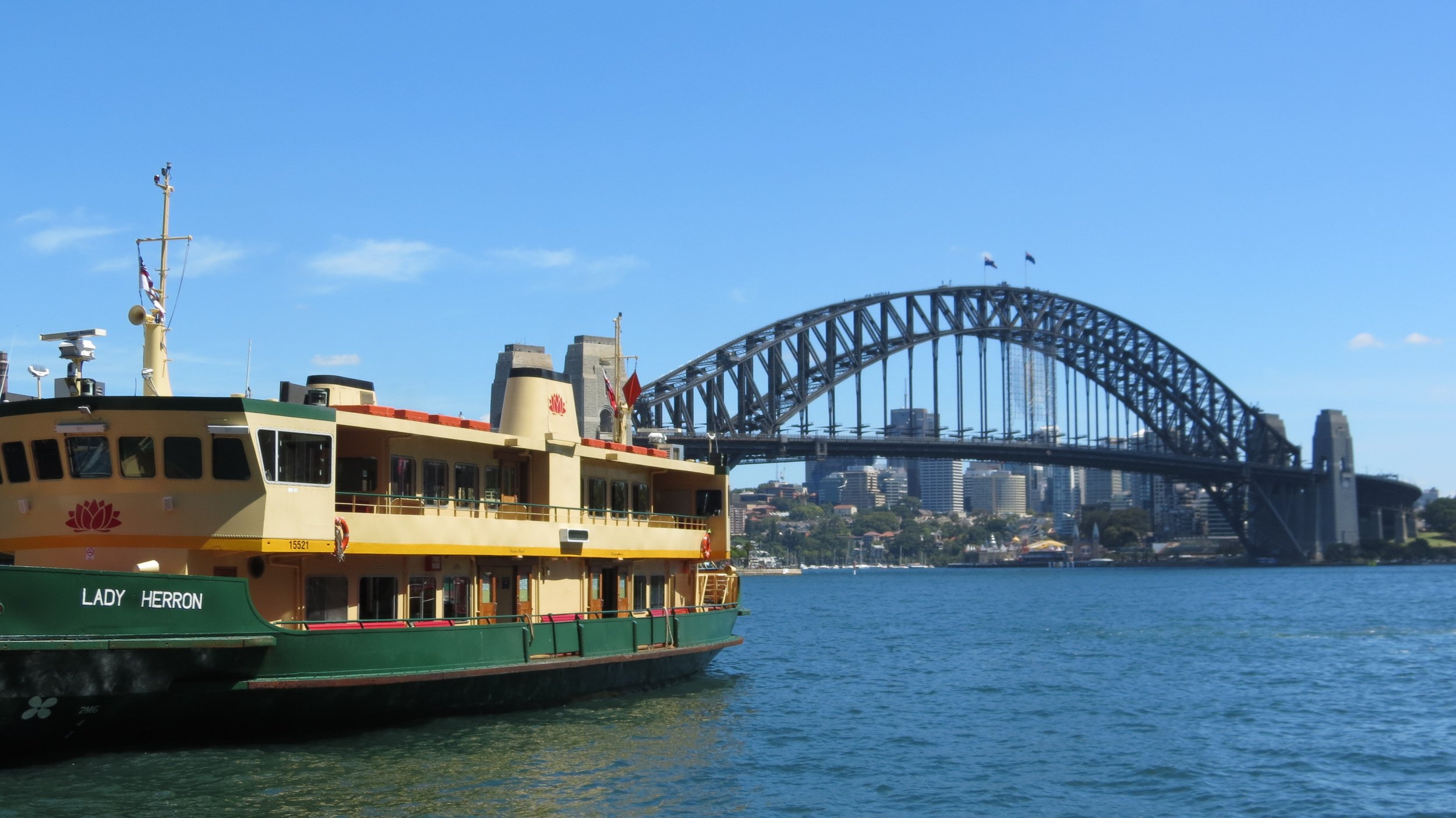Sydney - Australia’s Big Smoke
New Year’s Eve anchored in Sydney Harbour in view of the Sydney Harbour Bridge and the Opera House? It’s an out-of-this-world experience, but there’s so much more to this cosmopolitan, culturally diverse, vibrant city. Come explore with us!
Passing through Sydney Heads and seeing the sprawling city before us was thrilling. Here we were... finally in Sydney, Australia. Hornsby Light far left.
Sydney, the capital city of New South Wales, is the biggest and most populous city in Australia. Land-wise, it is the largest city in the world. At 610 mi² (1580k²) across, it is the same size as London and more than double the size of New York. The first European discovery of the Sydney region was by Captain James Cook in 1770 during his first voyage into the Pacific region. Sydney was established as a British colony in 1788 when the First Fleet sailed into Port Jackson and anchored in Farm Cove. Folks from Sydney are called Sydney-siders.
The entry channel is wide and well-marked. We motored round Grotto Point with its picturesque lighthouse into Middle Harbour. To get to our marina, we passed through the Spit Bridge at its designated opening time. Cammeray Marina has been around since 1890. It welcomes international cruisers
and had a mooring for us through the holidays. What it lacks in flash, Cammeray makes up for with friendliness and a funky, Bohemian atmosphere.
Cammeray lies at the bottom of a steep hill and has no road access from above, so we had to climb the 109 steep, narrow, jungle-like stairs every time we wanted to go to town and lug all of our purchases back down. The trek up the stairs was made even more interesting by the critters we met on the stairs... like the pair of water dragons that inhabited the stairwell.
A view of Middle Harbour from the top of Cammeray’s stairs
Christmas 2011
After a Christmas morning toast, Shawn & John of "Active Transport" joined us for Christmas dinner. Turkey drumsticks was all we could muster up for our feast. Turkeys were sold out. Since Christmas is a summer holiday down under, dinner for Australians is usually a barbie, not a big roast turkey.
And by the way, reindeer do not pull Santa’s sleigh here. Six white boomers have the task of lugging St. Nick and his sleigh full of goodies.
Boxing Day, 26 December 2011 - Sydney-Hobart Race
The Sydney to Hobart Yacht Race (sometimes referred to as the 'Bluewater Classic' in the Australian media) is hosted by the Cruising Yacht Club of Australia, starting in Sydney, Australia on Boxing Day (26 December) and finishing in Hobart. The race is run in co-operation with the Royal Yacht Club of Tasmania, and is widely considered to be one of the most difficult yacht races in the world. The race was initially planned to be a cruise by Peter Luke and some friends who had formed a club for those who enjoyed cruising as opposed to racing, however when a visiting British Royal Navy Officer, Captain John Illingworth, suggested it be made a race, the event was born. The Sydney to Hobart Yacht Race has grown over the decades, since the inaugural race in 1945, to become one of the top three offshore yacht races in the world and it now attracts maxi-yachts from all around the globe. (from Wikipedia)
The 630 nm Sydney-Hobart Race begins in Sydney Harbour, crosses the Bass Strait and ends in Hobart Harbour, Tasmania. The 2011 race marked the 67th running of the Sydney-Hobart Race.
We hung out around the Sydney Heads at the sea mark waiting for the race to start. The scene was pure bedlam. Hundreds of boats of all shapes and sizes crowded the harbor. Midst the big boats were kayakers, paddle boarders and skiffs. We counted 12 helicopters hovering above, adding to the frenetic atmosphere.
And the results… Of the 88 boats that started the race in Sydney, 76 boats finished. Here are the winners..
Line Honors: Investec Loyal 2:06:14:18; Wild Oats XI 2:06:17:26; Lahana 2:12:34:26
Overall Honors: Loki, Living Doll, Ragamuffin
New Year's Eve 2011 - Sydney Harbour - Athol Bay - 33S51.07 / 151E14.41
We moored outside the Spit Bridge for the night in order to get an early start to Athol Bay in the morning and stake our claim for a primo viewing spot for the fireworks. By Noon, the anchorage was pure bedlam. Hundreds of boats were anchored, rafted up and vying for the best vantage spots. In actuality, from this anchorage, there wasn't a bad view.
A smudging ceremony is an ancient Aboriginal custom that involves burning various native plants to produce a smoldering smoke which they believe has cleansing properties and the ability to ward off bad spirits. It's performed at major events, such as births and deaths and the start of the Sydney New Year’s Eve celebration. As the sun sank, the festivities began.
About once an hour starting at 9pm, some "teaser" fireworks were shot off to whet our appetites for the real thing. A parade of decked out boats motored by. Synchronized with the clock on the bridge, we counted down the seconds to the stroke of midnight. The sky erupted in an unbelievable display of color, sound and dazzling lights. On and on, the pyrotechnics continued and we pinched ourselves to confirm we were really in Sydney to witness it all. The fireworks are launched from seven barges on the Harbour, the rooftops of seven city skyscrapers and, unforgettably, from Sydney Harbour Bridge. Bringing more than 1.5 million people to the Harbour, this majestic fireworks display is the reason why Sydney calls itself the New Year’s Eve capital of the world.
The display was magnificent! Happy 2012!
The Sydney Ferries
Early settlement grew around Sydney Harbour and quickly stretched up the Parramatta River, over to the North Shore and to Manly. The only realistic
way to travel around was by boat. Within a year of colonization, Sydney's first ferry was built and launched. Sydney Ferries' fleet consists of 28 vessels (all of which are wheelchair accessible), which travel around 1.3 million kilometres per year. In the 230+ years since colonization, more than 500 ferries have serviced the harbor and its adjoining rivers and coves. Sydney Ferries transports more than 14 million people across Sydney Harbour and the Parramatta River each year. The extensive ferry network connects 39 destinations and spans approximately 37 km (23 miles).
We decided an entire day riding the ferries would give us a good feel for Sydney Harbour and all it had to offer. We bought an inexpensive day-ticket
that allowed "all day" on and off the ferries.
Sydney Harbour Bridge
Designed and built by the English firm of Dorman Long and Co. Ltd. and opened in 1932, the Sydney Harbour Bridge is affectionately nicknamed "The Coathanger" because of its arch-based design. According to the Guinness Book of World Records, it is the world's widest long-span bridge. Until 1967 the bridge was city's tallest structure.
Whether you walk under it, sail under it, ride over it or walk over it or maybe fly over it while others climb it, it's hard not to be impressed by the Sydney Harbour Bridge. The iconic structure is a steel through arch bridge across Sydney Harbour that carries rail, vehicular, bicycle and pedestrian traffic between the Sydney central business district (CBD) and the North Shore. The dramatic view of the bridge, the harbor, and the nearby Sydney Opera House are iconic images of both Sydney and Australia. So, just a few photos of a very famous bridge.
We snagged a stranger and asked them to take this iconic pic.
Sydney Opera House
The Sydney Opera House is situated on Bennelong Point in Sydney Harbour, close to the Sydney Harbour Bridge. It sits at the northeastern tip of the Sydney central business district (the CBD), surrounded on three sides by the harbor (Sydney Cove and Farm Cove) and neighbored by the Royal Botanic Gardens.
A multi-venue performing arts center, the Opera House was conceived and largely built by Danish architect Jørn Utzon, finally opening in 1973 after a
a slow start beginning with his competition-winning design in 1957 and following constant altercations and scandals with local officials which led to his resigning before the Opera House was completed. The Opera House was formally opened by Elizabeth II, Queen of Australia, on 20 October 1973. Utzon was not invited, nor was his name mentioned at the ceremony. He returned to Denmark and died before ever seeing the finished building. The Sydney Opera House was made a UNESCO World Heritage Site on 28 June 2007. "It is one of the great iconic buildings of the 20th century, an image of great beauty that has become known throughout the world – a symbol for not only a city, but a whole country and continent. "...the 2003 Pritzker Prize for Architecture citation.
“Utzon made a building well ahead of its time, far ahead of available technology, and he persevered through extraordinary malicious publicity and negative criticism to build a building that changed the image of an entire country. ”
The Sydney Opera House - it’s all peaks and angles
Sydney on foot ... Chinatown
Sydney's Chinatown is located in the Haymarket section of the city. It's centered around Dixon Street, a pedestrian street mall with many Chinese restaurants, and with a Paifang (welcome arch) at each end. 2012 was the Year of the Dragon and the area was all decked out in colorful Chinese decorations.
Cockatoo Island
Cockatoo Island is the largest of several Sydney Harbour islands and one which we access by ferry and tour on our own. The island has a varied
history. From 1839-1850, a prison was built here and for two decades the Fitzroy Dock and workshop were built and staffed by convicts to service Royal Navy ships. In the late 19th century it was used as a girl’s reformatory and industrial school and later as a shipyard. It was restored in 2001 for public access. From a distance, the island did not look very appealing... especially the big "No Trespassing" sign. Dismal and industrial from afar, it was quite interesting once we arrived and took our self-guided tour of the two different levels of the island connected by a tunnel with an interesting art display. The waters around the island were believed to be shark-infested. Only one man, aided by his Aboriginal wife, ever escaped from the prison.
Eclectic Sydney ... a bit of this, a bit of that
The best part of wandering through a city on foot is observing unique views that you’d otherwise miss. Part of our enjoyment of Sydney was
walking around and finding places and things that amused us or fascinated us. We'd walk and see a building or a sign or a scene or something different that caught our attention or made us take a second look. So... no rhyme or reason to the photos here, just because...
Sydney Anchorages
You could stay in Sydney for a year and still not have visited all the nooks, crannies and anchorages that abound. Too many anchorages... not
enough time.
We moved from Cammeray Marina shortly after our visitors left. We moved first to Bantry Bay, still in Middle Harbour and still behind the Spit Bridge. Though only six miles from Sydney CBD, we were in the bush. The anchorage is surrounded by Garrigal NP. Outdated munitions buildings were off-limits but a small pier on the east side of bay allowed access to park grounds and picnic areas.
Lane Cove River - 33S50.24/ 151E10.13
After a couple days, we opted for an anchorage with ferry access to the city. There are several across the harbor, but we knew they were crowded. Instead we chose the tranquil Lane Cove River. Though thick with moorings, there was plenty of room to anchor further out and good holding in the muddy, river. The anchorage was also just a short walk to the Woolwich ferry dock.
On the opposite side the bay opposite was the Longueville Wharf, Aquatic Club and Rowing Club and we were frequently entertained by the young sailors and crew teams practicing in the river near the boat. These little boats are much less forgiving than Nine of Cups... thank goodness. We watched as one team capsized and then righted themselves. They seemed unconcerned about the ordeal and not particularly shaken by the cold river water and handled it all in stride.
Sydney Festival in Parramatta
Sydney Festival is a month-long, annual arts celebration. Music, theatre, dance, visual arts and talks are scheduled throughout the month. Cruising friends on Fifth Season and Active Transport invited us to meet them in Parramatta, way up river from Sydney, for a picnic and free concerts one evening. Via ferry and train, we made it to Parramatta for the concert. The river is so shallow that even the Sydney Ferries cannot make it all the way up at some low tides.
Brewmeister at work....
In our continuing efforts to be self-sufficient, independent and thrifty, David bought a Coopers DIY beer brewing kit at the local K-Mart for $85 and began brewing his own beer. We’ll see how that works out soon.
We’ve done so much and there’s so much left to do. We didn’t visit the Royal Botanic Gardens, the Maritime Museum, NSW Art Gallery, the Australia Museum, the zoo... the list goes on and on. Thank you, Sydney and Sydneysiders for your hospitality and making these cruisers feel exceptionally welcome. We hope to be back.
But… time waits for no man (although we did wait a couple of days for the beer brew) ... and the minutes and days of summer were ticking by much too quickly. We left Sydney regretfully. It's a wonderfully electric, vibrant place to be, but Tasmania called and off we went down the Victoria Coast. Come on along… a Killer Whale Museum, black swans and lots of koalas!
In the meantime, check out 11 Things to Do on a Budget in Sydney. Click on the pic or the link below.
Interested in a tour of Sydney ‘on the cheap’? Click here



